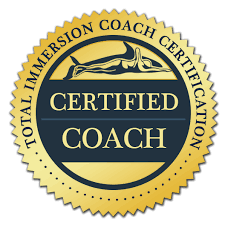Dry Learning
Learning TI swimming require a deep understanding of water characteristics, how we move through the water, and how we can achieve efficiency by changing our body position and stroke bio-mechanics. Before we jump in the water we will watch a TI swimming presentation in the classroom which will include:
- Common mistakes most swimmers make
- What WILL make you faster and what will NOT
- The benefits of working efficiently – form does matter
- Types of drag that slow you down
- The three TI foundation skills: balance, streamline and propulsion
- Open water and Triathlon swimming
Coach in the Water
Whether you are in a private class or among other students in a workshop, you will always find me in the water observing you from above and below water. I will provide you with on the spot feedback for correction and self improvement. I will demonstrate every drill before you do the drill yourself. You will also watch a playback video of yourself so that you can see exactly what you are doing correctly and what you need to work on.
Visual Feedback
We all know how it feels when we swim, however we don’t know how we look when we swim. Watching yourself on video will give you a better understanding of specific movements requiring correction. The use of video is an integral part of TI learning, so I will video you below and above water from different angles and provide you with analysis of your drills and swim form. Video analysis is so beneficial many students return for a 2 hour session that they can review over and over again to make continual improvements.
More information about what Total Immersion is and what it does for you:
Three Steps to Success
Total Immersion techniques of have been refined over 25 years with countless thousands of students—most of whom had little skill or experience.
We follow the same 3-step sequence of foundational skills with every student and every form of swimming. When you learn these skills you’ll be able to:
- Swim farther and faster using less energy
- Enjoy every stroke and improve continuously.
- Swim free of injury or pain.
Step One: The 3 C’s–Comfort, Control, and Confidence
Every TI student–whether novice or experienced (even former Olympians!)–begins by learning Balance and Core Stability. These foundational skills replace that sinking sensation with a comforting (for some, thrilling!) sense of being ‘weightless’ in the water.
First you learn to cooperate with—instead of fighting—gravity and employ principles of physics (instead of exhausting kicking) to create an ‘effortlessly horizontal’ position from head to toe. Then we teach you to stabilize your core body to control sideways or rotational forces that can divert your arms and legs to ‘steadying’ actions.
Feeling that you’re in control of your position in the water will bring the confidence and mental calm needed to master more advanced skills. As well, this step gives you first-hand knowledge of how human anatomy naturally behaves in a fluid medium. You’ll use this insight to minimize problems and maximize opportunities inherent in the aquatic medium.
Step Two: Take the Path of Least Resistance
Because water is 1000 times denser than air, water resistance (drag) is the largest factor limiting how far or fast we swim. Fish and aquatic mammals are naturally streamlined. For human swimmers it’s a learned skill.
Because there are two forms of drag, we teach two ways of streamlining:
- Pressure drag is resistance that builds up in front of your body as you move through the water. Bulky or constantly-changing shapes create far more resistance than an unchanging and sleek shape.
- Wave drag is energy diverted from locomotion into moving water around—i.e. making waves, turbulence, bubbles, and splash. Any energy you expend moving water around isn’t available to move you forward.
We minimize these two forms of drag by teaching these skills:
Shape Your ‘Vessel.’ This step is inspired both by the streamlined shape of fish and aquatic mammals and by the principles naval architects use in shaping vessels to minimize pressure drag. Apply it to the human form by extending your body—head, limbs and torso–into a long, slippery shape. Mindfully strive to minimize deviation from this shape as you stroke and breathe.
Don’t Make Waves. Minimize Wave Drag by striving trying to minimize wave making, bubbles, splash, and even noise. All are evidence of energy being diverted from locomotion into moving the water around. The farther and faster you swim, the bigger the payoff from doing so with quiet strokes.
Step Three: Move From Your Core
In traditional technique, the arms and legs do the lion’s share of the work, while the core body is passive baggage. We invert that dynamic initiating all movement, power, and rhythm in the core—the most naturally powerful and fatigue-resistant part of the body.
We teach you to carefully integrate the movements of the head, arms, and legs with rhythms initiated in the core. Power originates in the core and flows to the arms and legs. The better that integration, the less work it takes to swim farther and faster. I.E. The same level of fitness will take you farther.
What about Breathing?
It’s obvious that breathing is both the most essential and most challenging of all skills. So where does breathing fit into the TI skill sequence. Actually, development of seamless breathing skill is integral to every step. When you are comfortable and in control of your body, breathing is far easier. When you maintain a long, sleek shape while breathing, you conserve both momentum and power. And finally, it’s far easier to get that breath when the energy for moving your mouth to the air comes from core rotation.
As you may have grasped while reading this, this style of swimming—cooperating with gravity, extending your body line, moving from the core—doesn’t come naturally. But they are most certainly learnable.

